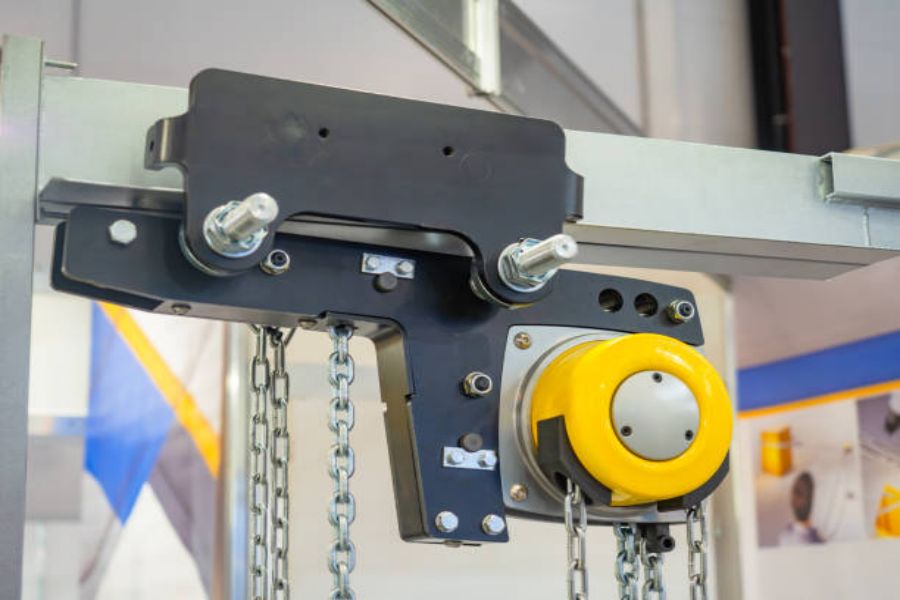The Basics of Manual Hoist Lifts:
Manual hoist lifts are mechanical devices used to lift, lower, and move heavy loads. They are available in a variety of sizes and capacities, ranging from small units capable of lifting a few hundred pounds to heavy-duty systems that can handle loads up to several tons. Manual hoists are operated by hand and do not require any external power sources. These devices have a relatively simple design and are easy to use. They are widely used in various industries, including construction, manufacturing, and warehousing.
Types of Manual Hoist Lifts:
There are two main types of manual hoist lifts: chain hoists and lever hoists. Chain hoists use a chain to lift the load, while lever hoists use a lever to lift the load. Chain hoists are typically used for heavier loads and can lift loads vertically or horizontally. Lever hoists are more compact and portable and are ideal for use in tight spaces. Both types of manual hoist lifts are designed to provide a reliable and efficient lifting solution.
Features of Manual Hoist Lifts:
Manual hoist lifts come with a range of features that make them versatile and easy to use. Some of the key features of manual hoists include adjustable load brakes, adjustable hooks, and load limiters. These features allow users to customize the hoist to meet their specific needs and ensure safe and efficient lifting.
Benefits of Manual Hoist Lifts:
Manual hoist lifts offer several advantages over other lifting devices. One of the main benefits of manual hoist lifts is their simplicity and ease of use. They do not require any external power source or complicated controls, making them easy to operate. Manual hoists are also highly durable and can withstand heavy use, making them a cost-effective option for many businesses.
The Role of Manual Hoist Lifts in Construction:
Manual hoist lifts are widely used in the construction industry, where they play a critical role in lifting heavy materials such as concrete, steel, and timber. Manual hoists are often used in conjunction with cranes and other lifting equipment to enable workers to move materials into position. Manual hoists are also used to lift personnel, particularly for work at height.
Manual Hoist Lifts in Manufacturing:
Manual hoist lifts are also frequently used in manufacturing settings, where they are used to lift and move heavy products and machinery. They are particularly useful in areas where space is limited or where larger lifting devices are not suitable. Manual hoists can also be used to lift and position molds, dies, and other tools used in the manufacturing process.
Applications of Manual Hoist Lifts in Warehousing:
Manual hoist lifts are an essential tool in warehousing and logistics environments, where they are used to move goods around the warehouse and load and unload trucks. Manual hoists are ideal for use in areas where forklifts and other larger lifting devices are not practical. They are also useful for moving heavy loads to higher levels in the warehouse, such as onto mezzanine floors.
Manual Hoist Lifts for Agricultural Use:
Manual hoist lifts are also used in agricultural settings, particularly for lifting and moving heavy farm equipment such as tractors and plows. They are also useful for lifting hay bales and other agricultural products. Manual hoists are particularly useful in rural areas where power sources may not be readily available and where larger lifting devices are not practical.
Choosing the Right Manual Hoist Lift:
When choosing a manual hoist lift, it is important to consider factors such as the weight and dimensions of the load, the lifting height required, and the environment in which the hoist will be used. It is also important to consider the frequency of use and the maintenance requirements of the hoist. A reputable supplier can help businesses to choose the right manual hoist lift to meet their specific requirements.
Care and Maintenance of Manual Hoist Lifts:
Proper care and maintenance of manual hoist lifts are essential to ensure safe and efficient operation. Users should follow the manufacturer's instructions for use and maintenance and regularly inspect the hoist for signs of wear. Hoists should be kept clean and well-lubricated, and any damaged or worn components should be replaced promptly.
Quote Inquiry

